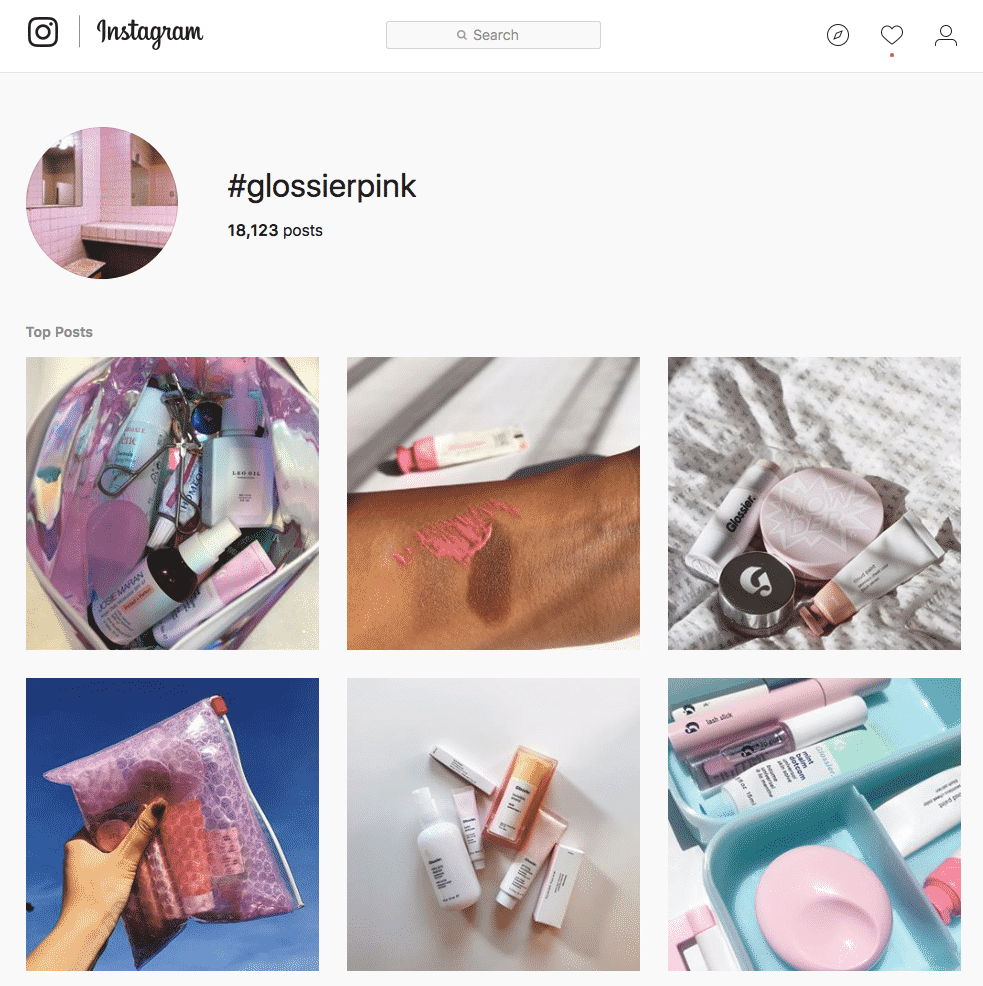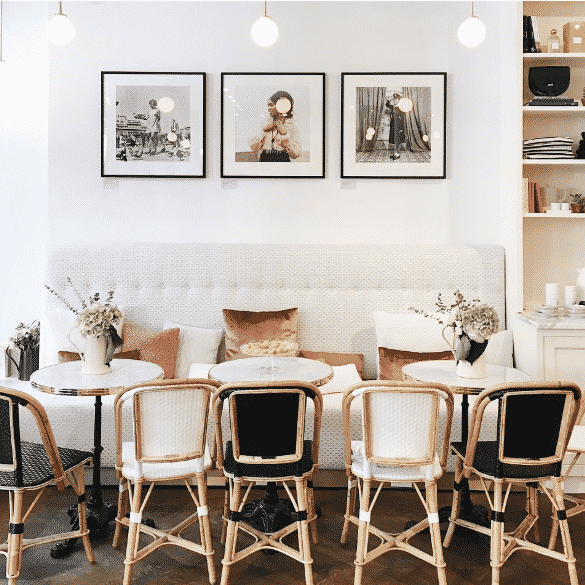One of the major challenges brands and retailers face everyday is how to create satisfying and meaningful experiences for customers to make them want to return again and again. Customer loyalty programs are just one part of a complex answer.
Today, it takes a lot more than asking your shoppers for an email address and birthdate to encourage loyalty. Shoppers want more than just points – they want authenticity, education, and purpose. They’re shopping everywhere and their interaction with your brand doesn’t end at the checkout screen.
To truly engage customers, marketers need to think omnichannel. If you’re looking to take your customer loyalty beyond your ecommerce site, it’s time to invest in experiences on other channels. Sometimes, that means content, influencers, or even pastries.
Here’s how three companies do it:
1. Lifestyle Content
The brainchild of actress-turned-entrepreneur Gwenyth “Goop” Paltrow, Goop is a full-fledged lifestyle brand that started as a simple email newsletter that Paltrow sent to friends with her travel and restaurant recommendations. Now, that simple email newsletter has turned into a website and ecommerce store stocked with Paltrow’s own line of skincare and wellness products, clothing, books, and weekly podcast.
The brand has gradually built an entire lifestyle through content. Fans can read the email newsletter, listen to the podcast, follow the brand on Instagram, and soon, subscribe to a print magazine. They can travel to and eat at restaurants recommended by Paltrow and team, delivered weekly into reader’s inboxes. They can wear Goop clothes while smelling Goop candles and popping Goop supplements. Each of these channels lets customers discover Goop products and other brands featured in Goop’s editorial content, and customers aren’t taken to the website unless they’re ready to buy.
Takeaway: Create content and open channels to reach shoppers and give them more opportunities to interact with your brand. Examine what types of content performs well on your website and listen to customer feedback – if they want more information about a product or a particular subject, work to bring it to your customers!
2. User-Generated Content
Beauty brand Glossier wins at sourcing content from experts and girls-who-could-be-your-best-friends alike (or girls who actually are your best friends).
On social media, the brand sources user-generated content (UGC) for their hashtags #glossierpink.

The brand also recruits brand ambassadors – influencers who while they might not have millions of followers, have thousands of loyal, engaged and authentic fans that are more likely to move products. These ambassadors post about their favorite Glossier products and have special discount codes that they can offer followers.
By turning their influential fans into an army of ambassadors, Glossier moves beyond the content on their website to other channels to spread the word about their products.
Takeaway: Your true fans will do the work for you for free and you can make it a win-win situation. Give them the opportunity – and the community – to foster their own networks and perhaps build their personal brand while promoting your products.
(Learn more: How Glossier, Harry’s and Away Build Customer Loyalty with Content)
3. Free Stuff, Good Experiences
Sometimes customer loyalty is simple. A beautiful store and breezy shopping experience always helps. At Sézane’s three stunning locations, what you see is pretty much what gets customers returning again and again.

In the brand’s Nolita location, an airy, Paris-inspired café setup greets customers as they walk in, complete with free coffee and an eye-catching assortment of French pastries, also free. Customers can choose to sit and sip without buying anything, while smartly-dressed and knowledgeable sales associates swan about helping shoppers find the latest items.
No matter how well designed a website is, it can’t beat a live café experience. There is no pressure to buy, only the expectation that shoppers enjoy being in the store itself.
Takeaway: A beautiful in-store shopping experience goes a long way. With or without a loyalty program, your brick-and-mortar location is a living advertisement for your brand and products. Make sure to invest in memorable activations and décor so that customers enjoy simply being inside and can’t wait to share it – both via word of mouth and on social media – with their friends.
4. Turn brick and mortar into an offline database.
Sometimes you can’t afford an actual store, or you don’t want to take the plunge and invest in a long-term brick and mortar contract. Previously online-only shoe retailer M.Gemi turned to storied department store Bloomingdales to start offering products offline before eventually launching stand-alone pop-up shops, and now those shops are turning into additional data points for the shoe retailer to get to know their customers better.
The collaboration with Bloomingdale’s let the department store bring in a new, fresh brand and shoppers who might otherwise not set foot in Bloomingdale’s, while M. Gemi tested sales in valuable real estate without paying top dollar or making a long-term investment up front. And the company’s pop-ups in New York and Boston let them bring more in-person experiences to their most loyal customer bases and learn more about what their shoppers want from the brand.
Takeaway: Don’t be afraid to experiment with collaborations and temporary opportunities that can take your brand to new (physical) heights and expose it to new shoppers.
5. House Calls
Armed with 380 new “in-home advisors,” Best Buy is taking customer service to the next level. These trained customer service agents with tech knowledge act, as Best Buy puts it, “personal chief technology officers” who make house calls to build long-term relationships while teaching customers how to connect and use their smart devices.
Operating under different goals from Best Buy’s tech support team Geek Squad, in-home advisors make house calls that can last up to 90 minutes and adhere to three main rules: No. 1: No job is too small. No. 2: Advisors will come to customer’s home for free. No. 3: Don’t force closing a deal.
By training staff to focus on customer relationships and solving for common pain points that customers might not easily find online, Best Buy has steadily increased sales and customer satisfaction over the past five years.
Takeaway: Don’t overlook the old fashioned way of doing things and merging your online presence with your offline abilities, such as allowing customers to pick up online orders in-store, and taking the time to build customer relationships in person.
A Solution for Shopper Re-engagement
Your business is all about your consumers, and how they experience your brand, wherever they shop. As touchpoints increase, turning shoppers into loyal customers becomes more difficult, so it’s key to think beyond their first or second touch with your brand.
And just as there’s more than one way for marketers to expand their loyalty and customer service offerings, Criteo offers a flexible marketing solution that helps you re-engage with your shoppers across their shopper journey with Criteo Audience Match, which can be implemented alongside your existing re-engagement and loyalty strategies.
(Learn More: 5 Ways to Re-engage with Criteo Audience Match)
Beauty retailer Sephora used Criteo Audience Match to provide different experiences for their various types of customers and increase the Lifetime Value of existing customers from the Beauty Club, its loyalty program. Customers impacted by the Criteo Dynamic Retargeting campaign and part of the Beauty Club were automatically placed in the new campaign and shown banners with special and customized offers different from those shown to retargeting campaigners who are not part of the loyalty program.
Sephora increased ROI 16% in the campaign’s first month and generated 2600 additional user sales from a combination of Criteo Audience Match and Criteo Dynamic Retargeting campaigns.
With Criteo Audience Match, you can identify your shoppers in our shopper network using Criteo Shopper Graph, the world’s largest open shopper data set. Informed by 600TB of shopper data at an average 60% match rate across all channels, our Shopper Graph helps you gain a better understanding of your shoppers’ journeys and interests and, with Criteo Audience Match, use this data to bring qualified traffic back to your site.
Learn more about Criteo Audience Match.





















